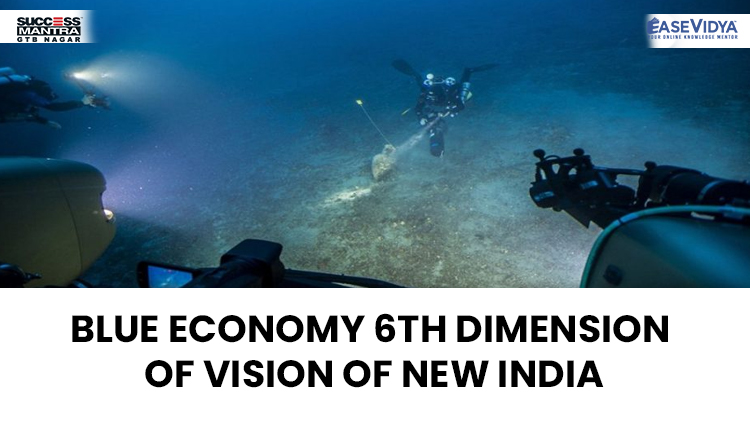
BLUE ECONOMY 6TH DIMENSION OF VISION OF NEW INDIA
BLUE ECONOMY 6TH DIMENSION OF VISION OF NEW INDIA
Recently, the Union Minister of Science and Technology and earth science emphasized that the Blue Economy is the sixth dimension of Government of India’s Vision of New India by 2030. A Draft Policy document on Blue Economy has been prepared by the Ministry Of Earth Sciences taking into consideration the reports of the expert working groups which emphasizes holistic development and growth of India’s Blue Economy.
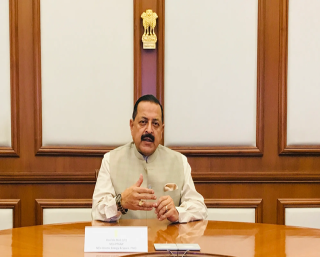
Current Affairs Notes By Success Mantra Coaching Institute GTB Nagar Delhi CLICK HERE
WHAT IS INDIA'S VISION OF NEW INDIA BY 2030?
In the Union Budget of India 2019 the Finance Minister laid out the Vision 2030 while highlighting India’s transformation in the last five years. India is poised to become a USD5 tn economy by 2025 and aspires to become a USD10 tn economy by 2030.
The dimensions of Vision-2030 outlined are as follows:
- To create physical and social infrastructure for a ten trillion dollar economy and to provide ease of living.
- Digital India led by the youths with innumerable start-ups and millions of jobs. To make India pollution free by focusing on Electrical Vehicles and renewables. Besides scaling up Sagarmala, India’s coastline and ocean waters will power development
- Through our space programme – Gaganyaan, India became the launch-pad of satellites for World
- Self sufficiency in food production and producing food in the most organic way.
- A healthy India by 2030 and a distress free health care and wellness system for all. Ayushman Bharat and women participation would be an important component in it.
RELATED: UNION CABINET APPROVED ‘DEEP OCEAN MISSION’
Recently, the Cabinet Committee on Economic Affairs has approved the proposal of the Ministry of Earth Sciences (MoES) on the Deep Ocean Mission (DOM). The blueprint of the DOM to explore the deep recesses of the ocean was unveiled in 2018. Earlier, MoES had also rolled out the draft Blue Economy Policy.
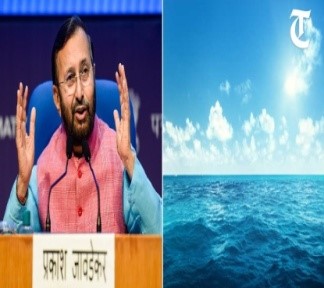
PRAVAHINI Current Affairs Notes By Success Mantra Coaching Institute GTB Nagar Delhi CLICK HERE
ABOUT THE MISSION
- The cost of the Mission has been estimated at Rs. 4,077 crore over a five-year period and will be implemented in phases. MoES will be the nodal ministry implementing this multi-institutional ambitious mission. It will be a mission mode project to support the Blue Economy Initiatives of the Government of India. Blue Economy is the sustainable use of ocean resources for economic growth, improved livelihoods and jobs, and ocean ecosystem health. The technology and expertise needed in such missions is now available with only five countries - US, Russia, France, Japan and China. India will now be the sixth country to have it.
- Major Components: Development of Technologies for Deep Sea Mining, and Manned Submersible: A manned submersible will be developed to carry three people to a depth of 6,000 metres in the ocean with a suite of scientific sensors and tools. An Integrated Mining System will be also developed for mining polymetallic nodules at those depths in the central Indian Ocean. The exploration studies of minerals will pave the way for commercial exploitation in the near future, as and when commercial exploitation code is evolved by the International Seabed Authority, a United Nations (UN) organisation.
SIGNIFICANCE OF THE MISSION
Oceans, which cover 70% of the globe, remain a key part of our life. About 95% of the Deep Ocean remains unexplored. Three sides of India are surrounded by the oceans and around 30% of the country's population living in coastal areas, the ocean is a major economic factor supporting fisheries and aquaculture, tourism, livelihoods and blue trade. India has a unique maritime position. Its 7517 km long coastline is home to nine coastal states and 1382 islands. The Government of India's Vision of New India by 2030 announced in February 2019 highlighted the Blue Economy as one of the ten core dimensions of growth. Oceans are also a storehouse of food, energy, minerals, medicines, modulator of weather and climate and underpin life on Earth. Considering the importance of the oceans on sustainability, the UN has declared the decade, 2021-2030 as the Decade of Ocean Science for Sustainable Development.
OTHER BLUE ECONOMY INITIATIVES:
- India-Norway Task Force on Blue Economy for Sustainable Development: It was inaugurated jointly by both the countries in 2020 to develop and follow up joint initiatives between the two countries.
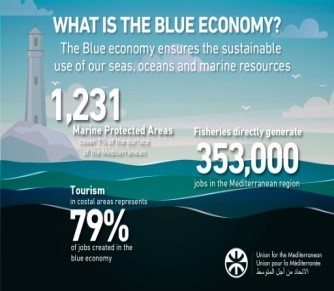
- Sagarmala Project: The Sagarmala project is the strategic initiative for port-led development through the extensive use of IT enabled services for modernization of ports.
- O-SMART: India has an umbrella scheme by the name of O-SMART which aims at regulated use of oceans, marine resources for sustainable development.
- Integrated Coastal Zone Management: It focuses on conservation of coastal and marine resources, and improving livelihood opportunities for coastal communities etc.
- National Fisheries Policy: India has a National Fisheries policy for promoting 'Blue Growth Initiative' which focuses on sustainable utilization of fisheries wealth from marine and other aquatic resources.
DRAFT BLUE ECONOMY POLICY
Recently, the Ministry of Earth Sciences (MoES) has rolled out the draft Blue Economy policy, inviting suggestions and inputs from various stakeholders. It is in line with the Government of India’s Vision of New India by 2030. The policy document highlighted the blue economy as one of the ten core dimensions for national growth. It emphasizes policies across several key sectors to achieve holistic growth of India’s economy. It recognizes the following seven thematic areas:
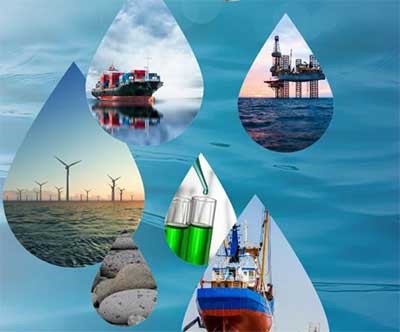
- National accounting framework for the blue economy and ocean governance.
- Coastal marine spatial planning and tourism.
- Marine fisheries, aquaculture, and fish processing.
- Manufacturing, emerging industries, trade, technology, services, and skill development.
- Logistics, infrastructure and shipping, including trans-shipments.
- Coastal and deep-sea mining and offshore energy.
- Security, strategic dimensions, and international engagement.
WHAT IS THE BLUE ECONOMY?
One of the major challenges following the pandemic is the loss of livelihoods and jobs. One of the ways for recovery and growth can go through the ocean. The Blue Economy represents enormous potential for sustainable economic activity and job creation after the crisis. India has a unique maritime position, with a 7,517-km long coastline and an Exclusive Economic Zone of over two million sq-km. Having vast ocean resources at their disposal – presenting a huge opportunity for boosting their economic growth and to tackle unemployment, food security and poverty. The resources in these areas can spur India’s economic recovery in a manner that is also beneficial to our climate and environment.
BLUE ECONOMY VS OCEAN ECONOMY
The ‘Blue Economy’ is an emerging concept which encourages better stewardship of our ocean or ‘blue’ resources. Similar to the ‘Green Economy’, the blue economy model aims for improvement of human wellbeing and social equity, while significantly reducing environmental risks and ecological scarcities. International society believes that the blue economy covers three economic forms:
- Economy coping with global water crisis
- Innovative development economy
- Development of marine economy
It is important to note that the blue economy goes beyond viewing the ocean economy solely as a mechanism for economic growth. In the ocean economy model, large-scale industrial nations sought to exploit the maritime and marine resources, often without a view to the effects their activities have on the future health or productivity of those same resources.
INDIA’S 1ST MANNED OCEAN MISSION: SAMUDRAYAAN
Union Minister of State Dr Jitendra Singh launched India’s first manned ocean mission Samudrayaan at the National Institute of Ocean Technology in Chennai. With this launch of the Unique Ocean Mission, India joined the elite club of nations such as the US, Russia, France, Japan, and China to have niche technology and vehicles to carry out subsea activities. This will open up more growth avenues to explore ocean resources for clean energy, drinking water, and blue economy.
It is India’s first unique manned ocean mission that aims to send men into the deep sea in a submersible vehicle for deep-ocean exploration and mining of rare minerals. It will send three persons in a manned submersible vehicle MATSYA 6000 to a depth of 6000 metres into the sea for deep underwater studies. Submarines go only about 200 metres. It is a part of the Rs 6000-crores Deep Ocean Mission.
TEST YOURSELF
Q.1 Which of the following Union Ministries have prepared the Draft Policy document on Blue Economy?
- Ministry of Earth Sciences: ANSWER
- Ministry of Jal Shakti
- Ministry of Environment, Forest and Climate Change
- None of the above
Q.2 Recently, the Cabinet Committee on Economic Affairs has approved which of the following Ministries' proposals on the Deep Ocean Mission (DOM)?
- Ministry of Water Resources & River Development
- Ministry of Earth Sciences: ANSWER
- Ministry of Jal Shakti
- None of the following
Q.3 Which of the following given statements is/are correct in the reference to the Deep Ocean Mission of the Central Government?
- The cost of the Mission has been estimated at Rs. 4,077 crore over a five-year period and will be implemented in phases
- It will be a mission mode project to support the Blue Economy Initiatives of the Government of India.
- The technology and expertise needed in such missions is now available with only four countries - US, Germany, France & United Kingdom. India will now be the fifth country to have it.
- II & III follows
- Only I follows
- I, II & III follows
- None of the above: ANSWER
Q.4 Considering the importance of the oceans on sustainability, the UN had declared which of the following decades as the Decade of Ocean Science for Sustainable Development?
- Decade of 2021-2030: ANSWER
- Decade of 2031-2040
- Decade of 2041-2050
- None of the following
Q.5 Recently, India has launched the nation's first manned ocean mission 'Samudrayaan'. Which of the following nations have these niche technologies prior to India?
- United States of America
- France
- Russia
- All of the above-mentioned: ANSWER













0 Comment